From Bay to Coast: Richmond Students Build Coastal Connections

This school year, with the support of California Coastal Commission’s Whale Tail Grants Program, KIDS for the BAY (KftB) empowered hundreds of Richmond students and families to lead a lifetime of watershed and ocean stewardship. Environmentalists from Ford, Michelle Obama, and Washington elementary schools, and Montalvin Manor K-8 School participated in KftB’s Watershed Action – Coastal Connections program. They were thrilled to learn about our ocean, what the ocean provides for people and wildlife, and the importance of caring for the marine ecosystems we all depend on.
After learning about the San Francisco Bay watershed, students couldn’t wait to go on field trips to bay and ocean habitats to engage with nature in these connected watershed habitats, and to protect and care for the special ocean environment.
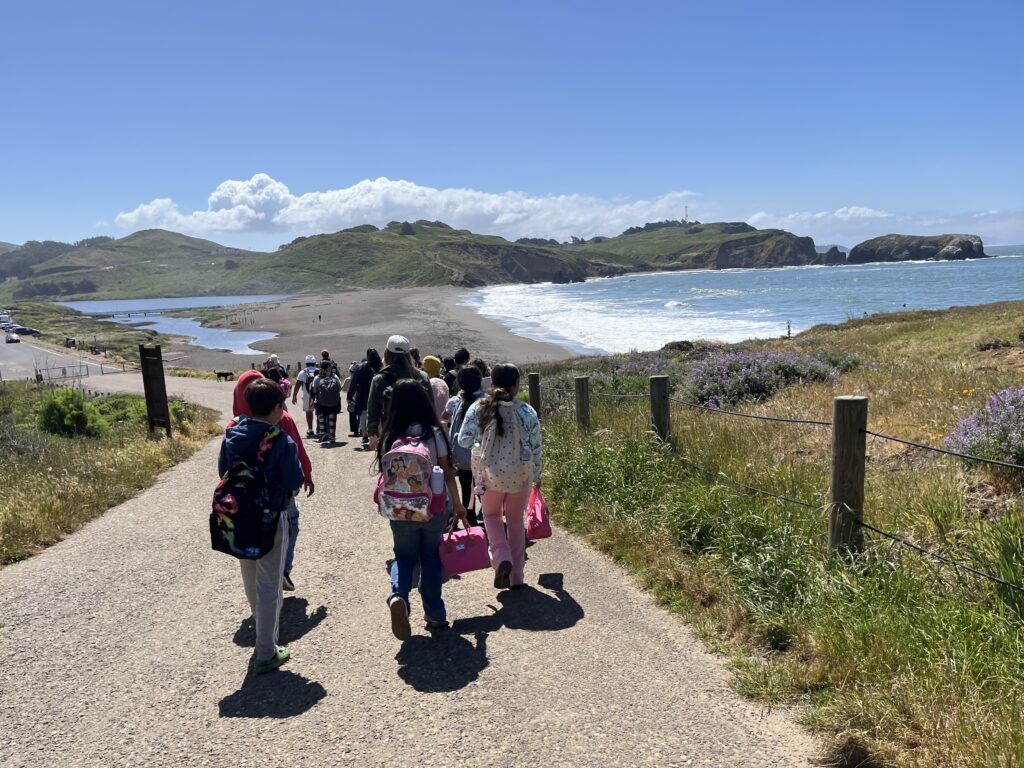
Keller Beach Field Trip
Students from Michelle Obama Elementary School arrived at Keller Beach full of excitement and wonder. “I’ve visited Keller Beach before with my family. It’s such a beautiful place!” exclaimed Lily.
Ms. Anaïs reminded the class, “Each and every one of you are scientists and Environmentalists! Today, we are going to discover lots of plants and animals that live in and around the San Francisco Bay.”
Students were thrilled to investigate intertidal organisms during their rocky shore investigation. “Who can tell me what an ‘invertebrate’ is?” asked Ms. Anaïs. “An invertebrate means an animal with no backbone,” shared Santi. “That’s right! Does anyone know what kinds of invertebrates we might find down on the rocky shore?” asked Ms. Anaïs. “Crabs!” suggested Julius. “Jellyfish!” said Mariam. “Remember, use quiet, soft voices and movements, watch where you’re stepping and stay low to the ground so that you don’t scare or injure any organisms.”

Students scoured the rocky shore, using their ‘rock radars’ to locate rocks small enough to lift. They exclaimed with joy as they discovered large masses of wriggling beach hoppers and explored the symbiotic relationships of blue mussels, barnacles and seaweed. “I think these are beach hoppers,” said Luna, observing hundreds of the creatures trying to burrow in the soil underneath a large rock. “I found an entire army of beach hoppers,” Renessme confirmed. “I saw at least twenty crabs!” said Reno. “I found a really big crab! Its biggest claws had white tips!” said Crista. “I found a purple shore crab!” added Haroon. “We saw a double-crested cormorant looking for food and swimming in the water. He can basically teleport!” said Reno, observing the sleek, black seabird as it dived in and out of the water.
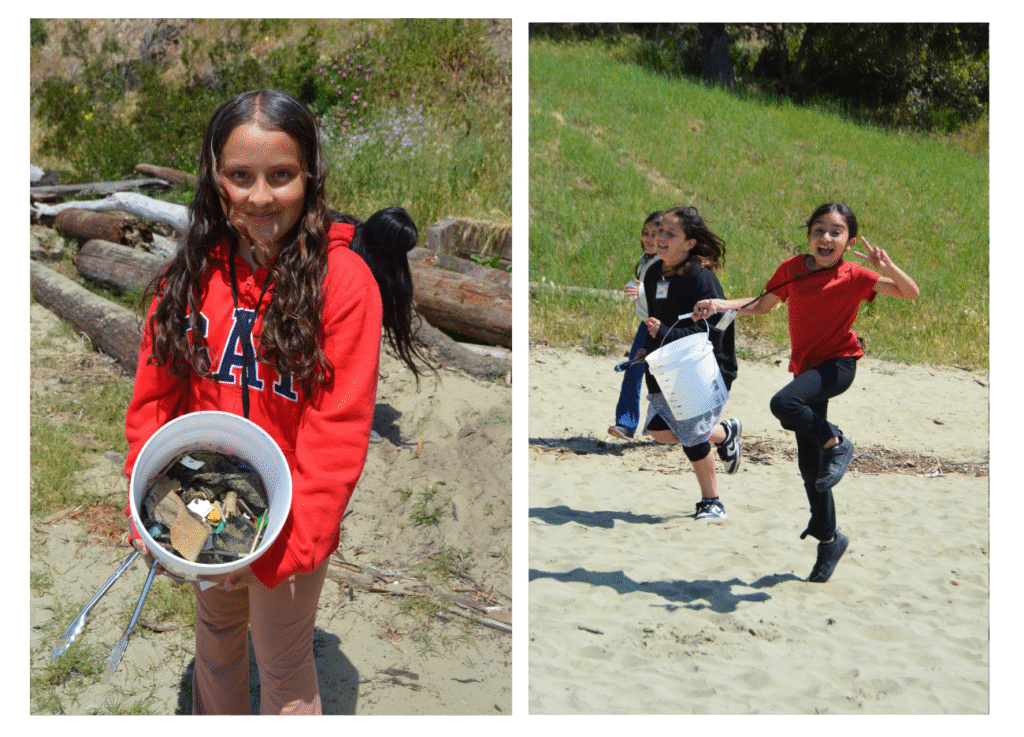
Students were inspired to lead a trash survey and cleanup at Keller Beach to protect and preserve this important bay habitat. “Look, I found a huge plastic jug. If we didn’t pick it up, it would break down into so many microplastics and hurt wildlife and people!” said Luna. “I found a spork and a straw. Plastic straws are bad for sea animals! I thought we banned them!” said Ruhi. “We found cigarette butts by the benches,” said Ximena. A squirrel was trying to eat a plastic bag but I took it away from him and threw it away properly, so that he doesn’t eat microplastics and get sick!” said Laura.
These explorations of the bay shoreline at Keller Beach ignited students’ curiosity, and they couldn’t wait to visit the ocean environment at Rodeo Beach and explore more of their watershed!
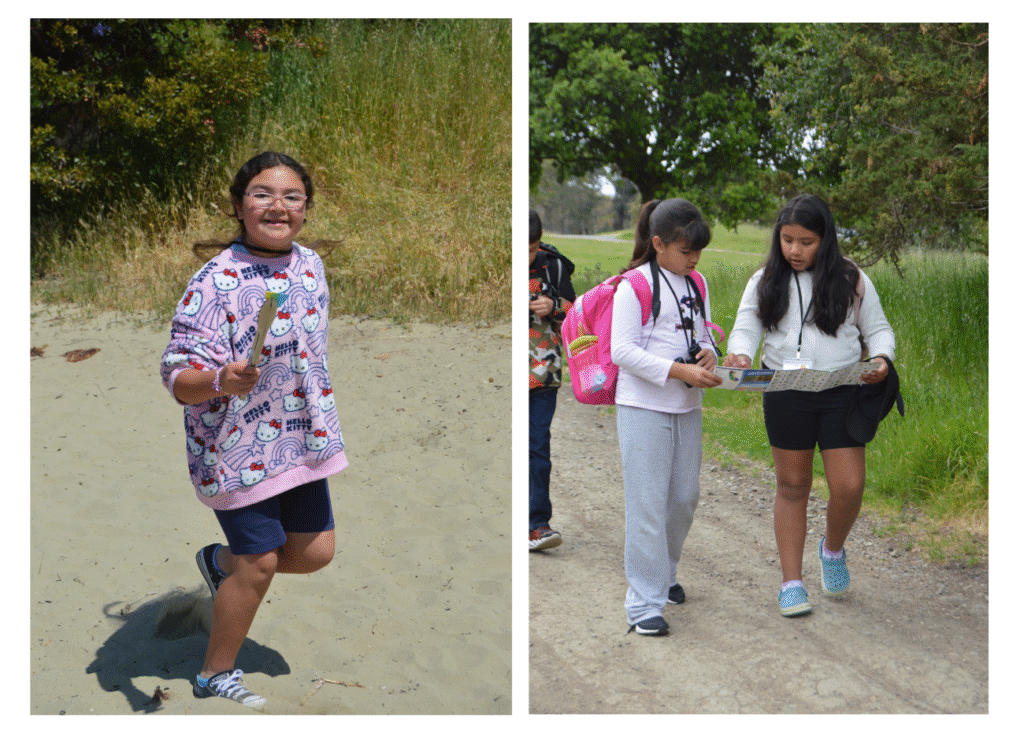
Rodeo Beach Field Trip
After everything they learned in their watershed lessons and bay field trips, students from Washington Elementary School were ready to explore the ocean beach and marine ecosystems at Rodeo Beach in the Marin Headlands. They had lots of exciting questions! “Are we going to hike up there?” Giancarlos asked, pointing to the sprawling headlands and coastal hills, cloaked in wisps of fog. “Are we going to see lots of animals today?” wondered Mariela. After some initial beach explorations and a snack break, Ms. Sabreena called students’ attention to their surroundings. “What is the body of water that you see behind me?” asked Ms. Sabreena. “The Pacific Ocean!” exclaimed Amari. “Today, we’re going to hike along the coast and explore this ocean beach. We’re going to see lots of cool birds and native plants!” she explained. Ms. Sabreena explained the rules of ‘Leave No Trace’ and encouraged students to leave their environment better than they found it.
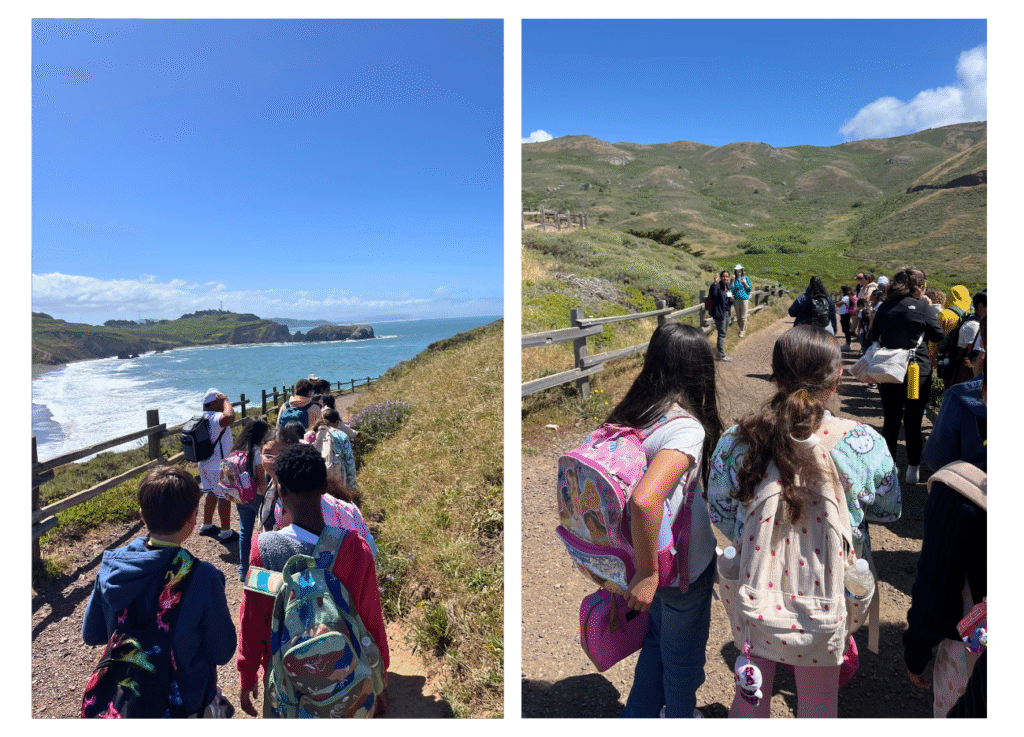
Ms. Sabreena passed out binoculars and bird guides, and the class began their hike up to the labyrinth. “I see two brown pelicans!” said Giuliana. “This is the first time I have ever seen waves crashing against rocks in the ocean. It’s so beautiful!” said Giancarlos. Students had a blast exploring the Rodeo Beach labyrinth and looking at the vast, gray ocean sprawled beneath them. “I didn’t know that buoys make noise! I think the buoys help boats see where they’re going in the fog!” said Francisco, listening to the gentle clanking and ringing noises emitted from the buoys, out at sea.
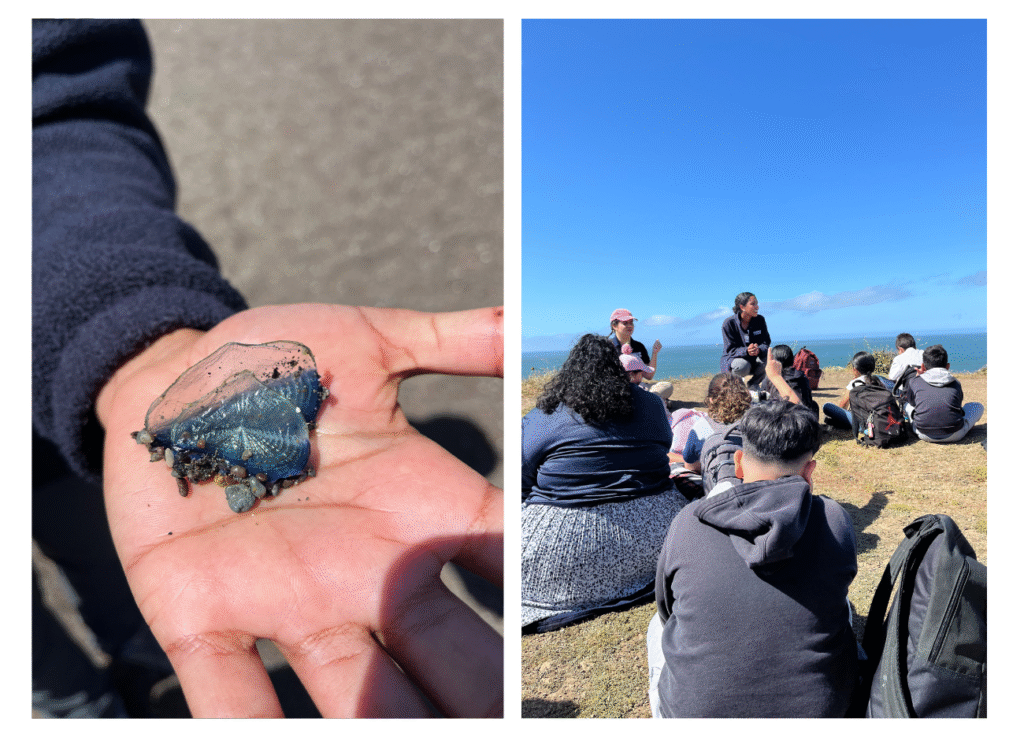
After lunch, the young Environmentalists explored Rodeo Beach in search of a nature artifact to share. Students scoured the beach searching for their artifacts. King discovered the plastic-like remains of a Velella velella, half buried in the sand. “What is this? It looks like plastic!” said Daisy. “That’s a by-the-wind sailor. Also known as Velella velella. They are like jellyfish! They float on the surface of the ocean, propelled by wind and currents. When they’re alive, they are bright blue. When they die, they leave behind these plastic-like remnants,” said Ms. Sabreena. To conclude the day’s activities, students shared an artifact or an observation from the trip. “I found a big blue mussel shell with a bunch of lichen and barnacles growing on it,” said Emanuel. “I found pollution!” said Dulce, holding up a broken plastic toy shovel. “I saw a rock shaped like a heart,” said Emilio. “I found a feather! I think it’s from a California Gull,” said Julieta.
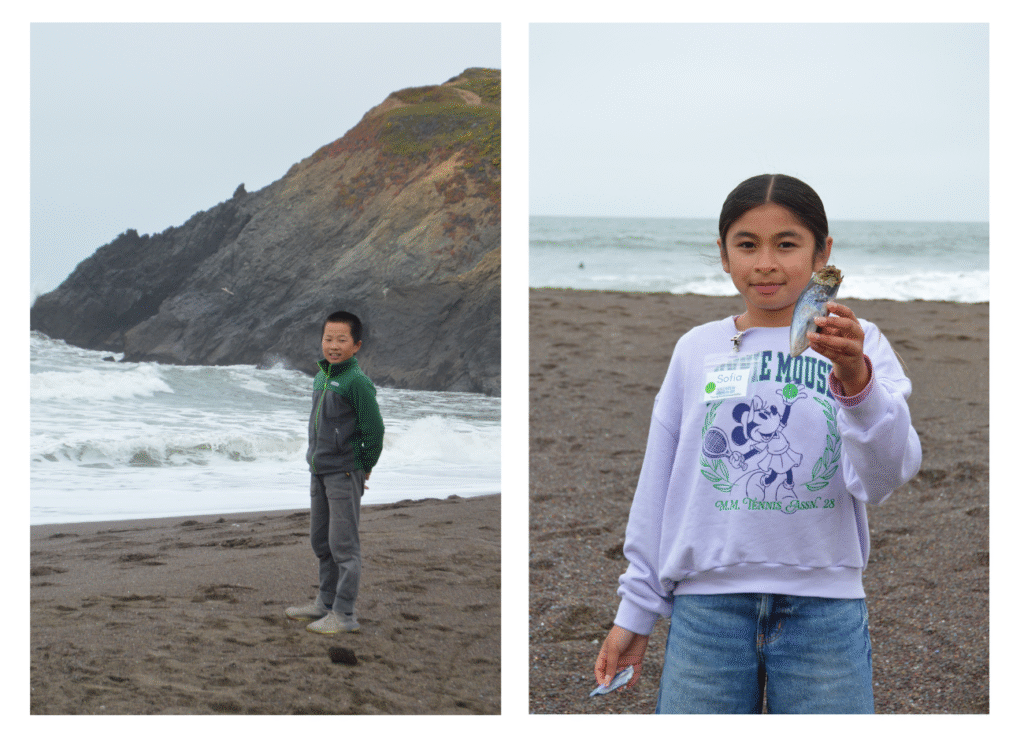
Students developed a new understanding of our oceans and the importance of protecting and restoring the marine ecosystems and resources we depend on thanks to their very special Rodeo Beach field trip!
This field trip was made possible by California Coastal Commission’s Whale Tail Grant.

